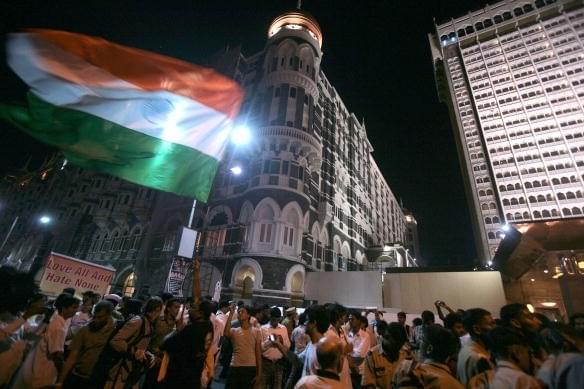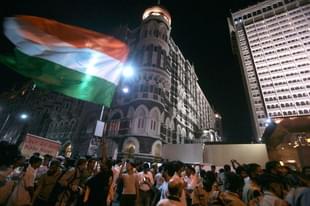Magazine
Busting The Hindu Terror Myth
R V S Mani
Aug 01, 2018, 01:35 PM | Updated 01:35 PM IST
Save & read from anywhere!
Bookmark stories for easy access on any device or the Swarajya app.


R V S Mani. Hindu Terror: Insider Account of Ministry of Home Affairs 2006-2010. Vitasta Publishing Pvt. 2018.
On 20 July 2010, then prime minister Dr Manmohan Singh hosted a lunch in which US ambassador Timothy Roemer asked Congress president Rahul Gandhi about 'Lashkar-e-Taiba's activities in the region and its immediate threat to India'. Wikileaks cables reveal that Rahul Gandhi responded by saying that 'the bigger threat may be the growth of radicalised Hindu groups'.
It was not just a casual comment by a leader then considered the prime minister in-waiting. By 2010, a lot of work—overseen by senior members of the United Progressive Alliance administration (UPA)—had gone into constructing the 'saffron/Hindu' terror myth. R V S Mani, former under-secretary in the Ministry of Home Affairs (MHA), in his new book ‘Hindu Terror’ (2018) takes the reader on a detailed tour of the processes and mechanisms through which the strongmen in the UPA government created this formidable narrative.
Excerpt:
Hindu Terror & NIA
If anyone recapitulates the investigation history of NIA through 2009-2010, it was all about introducing a new nonexistent ‘Hindu Terrorism’ concept. In every case assigned to NIA—from the Samjhauta Express Blasts, Malegaon to Ajmer Sharif— they overlooked the first set of evidences and replaced it with evidences supporting the Hindu Terror narrative.
The first major virgin case on which NIA claimed success is the case of some law & order disturbance between the participants in a rally on Diwali day in 2009, in which the Hindu Jagran Manch and Sanathan Sansthan [sic] were the participants. On 16.10.09, it was Diwali eve and a Narakasur effigy competition was held near the Shantadurga temple at Sancoale-Verna in Goa. The case report said, the accused persons and ‘other persons known and unknown’ conspired together to plant IEDs at the places of effigy competitions as they were against such competition and as part of their conspiracy, the above said group planted IEDs in a vehicle which was parked on the road near the Shantadurga temple on the night of 16.10.2009. Subsequently the vehicle was located and the bomb was diffused by the Verna police station.
NIA termed it ‘a case of Hindu Terrorism’.
I have heard a lot of debates on national media channels and people speaking for and against the existence of any Hindu Terror. But many people do not know of the dots and those who know, fail to join the dots.
It was amply clear that under the garb of new initiatives, the new Home Minister had pulled wool over the nation’s eyes. They were not his initiatives. For example a separate NIA-like mechanism had already been ordered by the apex court and the Administrative Reforms Commission in its VIIIth report titled ‘Combating Terrorism’ before Chidambaram’s tenure as Home Minister began. The federal agency—which he said was long due and endeared himself to the Supreme Court—the NIA was actually used by the new Home Minister as an instrument to propagate a narrative of Hindu Terror, Saffron Terror etc. The lack of transparency in appointment of its first and second Directors General was very evident.
David Coleman Headley
At a distance of nearly a decade, the ‘evidence’ called ‘David Coleman Headley’ seems mythical. In popular memory, only the two differently coloured eyes remain. And we in India’s security establishments know that there are not only two versions of the Headley story but several and Internal Security certainly does not know which is closest to the truth.
The NIA played a vital part in interrogation of the man known to international media and security establishments as David Coleman Headley (born as Daood Sayed Gilani in Washington).
A man called Tahawwur Hussain Rana was a Pakistani Canadian resident of Chicago, USA who was an immigration service businessman and a former military physician. In 2011, he was convicted of providing support to the militant group Lashkar-e-Taiba and of allegedly plotting an attack on the Danish newspaper Jyllands-Posten. At the trial of Rana, an alleged co-conspirator, David Headley gave detailed information about the participation of Pakistan’s Directorate of Inter-Services Intelligence (ISI) in carrying out the 26/11 Mumbai attacks.
Headley was arrested at Chicago’s O’Hare International Airport while he was attempting to travel to Pakistan on 9 October 2009.
US authorities gave Indian investigators, ie, the then NIA, direct access to Headley. NIA was the investigating agency for terror cases in India. According to a report in the Economic Times, Meera Shankar, the then Indian ambassador to the US called on Union Home Minister P Chidambaram to discuss the agenda for his meeting (in September 2009) with US Department of Homeland Security chief Janet Napolitano. She (Shankar) said: The Rana trial is going on and Headley is the key witness. The revelations coming out from the trial are shedding new light on the full details of the (26/11) conspiracy.
Since his guilty plea, Headley has cooperated with US and Indian authorities and given information about his associates. On 24 January 2013, a US federal court in Chicago sentenced Headley to 35 years in prison for his role in the Mumbai attacks.
The interrogation report of David Headley was submitted as a part of the ‘tour’ report of the investigating team, that is the NIA, then led by Inspector General Behara. The NIA submitted the ‘tour’ report to the Home Minister, P Chidambaram. The Home Minister’s office is reported to have excised portions of the Headley testimony to NIA.
From custody in the USA, Headley later deposed in ‘in camera’ proceeding in the Abu Jundal case in India.
During the online part of the trial in the Jundal case, Headley apparently said that Muzzamil Bhat (a key Kashmiri military asset of the LeT, according to the FBI) had told him that Muzzamil had played an important role in recruiting Ishrat Jahan and Pranesh Pillai alias Javed Mohammad Sheikh as fidayeen. According to Headley, Muzzamil also claimed that he had been instrumental in their being assigned the task of eliminating the then Chief Minister of Gujarat (Narendra Modi) and another prominent leader of Gujarat (Amit Shah). This part of the Headley testimony was soon available in the public domain.
A vital letter, which was found filed in one of the several litigations in the Jundal case, is the letter of Daniel Clegg, the then Legal Attache in the US Embassy in Delhi. He had expressly assured India of total cooperation of the US government in access to David Headley for questioning.
However, the then Indian government, including I recall, the then Home Minister Sushil Kumar Shinde (2012-2014), pedalled a public lie that the US government had been resisting any further access to David Headley. Often, NIA documentation was offered to the media as proof. Several years later, the then NIA, under the UPA regime, was accused of excising vital portions of the Headley testimony for tendering before the courts. However, the security establishment knew that the NIA had submitted a full ‘tour report’ containing the full Headley testimony to Home Minister Chidambaram.
A very pertinent point is to what extent was Headley’s interrogation excised? By admission, the references to Ishrat Jahan as ‘a botched mission’ has been revealed in the Abu Jundal trial.
May be, the portion defining film-maker Rahul Bhatt’s role in assisting David Headley in carrying out the recce of the Taj and Trident Hotels in 26 November 2008 too was excised for the courts. The nation wants to know how is it that a person who accompanies Headley on a recce—takes detailed rounds of Mumbai city—claims innocence, saying that he was not aware of what Headley was up to?
Also why should Rahul’s father pedal influence and write to the Union Home Minister? Since the son was innocent and had no idea of what Headley, his companion, was up to, they could have consulted a lawyer, got a statement recorded with any judicial authority under relevant sections of the Criminal Procedure Code and got him exonerated in the public eye.
One more important aspect of Headley’s statement was the ‘Kasab tradeoff’. In the statement before the trial court in the Abu Jundal case, Headley had reportedly hinted that there were attempts to take hostage some persons— possibly a Director-level person/s from India’s security establishments—to be traded off with Ajmal Kasab by the ISI. This testimony was also a part of Headley’s NIA interrogation which got edited out from official records.
Attempts to take hostage some Israelis and trade them for Ajmal Kasab’s release was revealed in Headley’s statement before the court in the Jundal case in March 2016.
However, way back in 2009, immediately after the 26/11 Mumbai attacks, there were whispers amongst the security and intelligence community that there would be attempts to take Indian government officials hostage and trade them off for Ajmal Kasab’s release. This was a purely internal security assessment about Indian officials. People like P K Mishra, then Director (IS), were on high alert, moving about within Delhi police cover. The NIA was very much aware of this. Was there a line of questioning by the NIA team which interrogated Headley in Chicago in 2009? What was the specific line of questioning? Was there any input from the interrogation with Headley on a possible tradeoff? Was it also a part of the answers which were excised?
For purely public consumption, most of the ‘dossier diplomacy’ started only after 7th January 2009. Before that, possibly, I was one of the alternative ‘target officials’ whose ‘botched up’ attempt to take hostage had already happened. Was some collaboration in existence between some top Indian political entity with Pakistani establishments? Was it a case of overplaying and recalibration? We do not know.
R V S Mani is former under-secretary, Ministry of Home Affairs.




